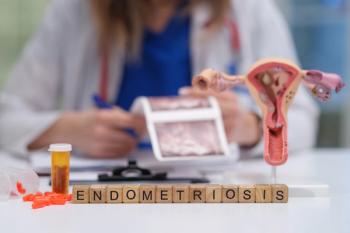
Air pollution linked to risk spontaneous preterm birth risk
A study presented at the 2025 ACOG Annual Clinical & Scientific Meeting found that fine particulate matter exposure during pregnancy is associated with increased odds of spontaneous preterm birth.
The odds of spontaneous preterm birth (sPTB) are increased among women exposed to fine particulate matter (PM2.5) and certain PM2.5 constituents, according to a recent study presented at the 2025 American College of Obstetrics & Gynecology Annual Clinical & Scientific Meeting in Minneapolis, Minnesota, from May 16 to May 18, 2025.1
Assessing PM2.5 exposures
Prior data have linked maternal PM2.5 exposure to preterm birth, but this data did not differentiate between sPTB and iatrogenic preterm birth. Therefore, investigators conducted a retrospective cohort study to determine the association between total PM2.5 and PM2.5 constituent exposure with sPTB.
Data on singleton live births between 2008 and 2018 were collected from a large health care system in southern California. This included daily exposure to total PM2.5 and PM2.5 constituents such as nitrate, sulfate, black carbon, organic matter, and ammonium. Average concentrations were measured across the pregnancy and by trimester.
Medical records were assessed with a novel natural language processing algorithm to identify sPTB cases. Associations between this outcome and PM2.5 exposures were determined using discrete-time survival models, with effect modifiers including maternal race and ethnicity, educational attainment, household income, and green space.
Higher sPTB risk with increased pollutant exposure
There were 409,037 births included in the cohort, 4.7% of which were sPTB. Among these births, increased exposures of total PM2.5, black carbon, nitrate, and sulfate were reported in sPTB cases.
The most significant associations were reported during the second trimester and were further increased in mothers with lower educational attainment, income, and green space exposure. This highlighted vulnerability from lower socioeconomic status, alongside a protective effect modifier for green space.
“Maternal exposures to PM2.5 and specific PM2.5 constituents were associated with an increased risk of sPTB,” concluded investigators.
PM2.5 exposure also tied to postpartum depression
Other health risks have been identified among new mothers exposed to PM2.5, including postpartum depression (PPD).2 This link was identified in a 2023 study assessing live births from the Kaiser Permanente Southern California (KPSC) health care system between January 1, 2008, and December 31, 2016.
PPD was measured using the Edinburgh Postnatal Depression Scale (EPDS), identified by scores of 10 or greater. These diagnoses were confirmed using the International Classification of Diseases, Ninth and Tenth Revision diagnostic codes. Residential data during pregnancy was also confirmed through electronic medical records in the KPSC system.
At 6 months following delivery, 7.54% of mothers presented with PPD. Notably, the condition was more common among mothers with under 4 years of college education or living in low-income neighborhoods or areas.
Significant effects of air pollution
Alongside PM2.5, particulate matter less than or equal to 10 μm (PM10) and ozone exposure were significantly linked to PPD. An OR per IQR increase of 1.09 was reported for these constituents. Additionally, PM10 and PM2.5 separately had ORs of 1.02. This highlighted a link between fine particulate matter exposure and PPD risk.
“Identifying the modifiable environmental risk factors and developing interventions are important public health issues,” concluded investigators.
References
- Reily AN, Jiao A, Benmarhnia T, Sun Y, Avila C, Wu J. The association between ambient fine particulate matter and spontaneous preterm birth: Evidence from a large pregnancy cohort in southern California. Abstract. Presented at: 2025 American College of Obstetricians and Gynecologists (ACOG) Annual Clinical and Scientific Meeting. May 16-18, 2025. Minneapolis, Minnesota.
- Krewson C. Study links long-term air pollution exposure to postpartum depression risk. Contemporary OB/GYN. November 10, 2023. Accessed May 15, 2025. https://www.contemporaryobgyn.net/view/study-links-long-term-air-pollution-exposure-to-postpartum-depression-risk.
Newsletter
Get the latest clinical updates, case studies, and expert commentary in obstetric and gynecologic care. Sign up now to stay informed.











